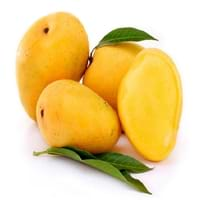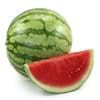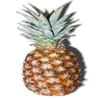Health Benefits
Cancer prevention, Cures fatigue, Heart care, Prevents strokes
Cancer prevention, Helps in cartilage regeneration, Prevents macular degeneration, Treatment of alzheimer's disease
General Benefits
Anti oxidant properties, Boosts immune system, Controls blood pressure, Digestive aid, Improves eye vision, Maintains healthy cholesterol level
Anti oxidant properties, Anti-inflammatory properties, Boosts immune system, Controls blood pressure, Digestive aid, Maintains healthy cholesterol level
Skin Benefits
Anti-aging benefits, Brightens and lightens complexion, Skin cleansing, Skin rejuvenation, Treatment of acne, Treatment of blackheads, Treatment of dark spots
Hydrates skin, Skin rejuvenation, Treatment of skin diseases
Hair Benefits
Good conditioner, Prevents hair loss, Treatment of dandruff
Acts as moisturizer, Good conditioner, Regulates hair growth
Allergy Symptoms
Abdominal pains, Breathing difficulty, Diarrhea, Runny nose, Sneezing, Swelling of mouth, tongue or lips, Watery eyes
NA
Side Effects
Increase in blood sugar level, Diarrhoea, Weight gain
Affects blood glucose levels, Dizziness, Stomach pain
Best Time to Eat
Don't consume at night and before bed, Eat the fresh ones, avoid mixing with any other foods, don't eat after meal., Morning time (before lunch)
Hardly eaten raw, Olive oil is consumed for many purposes.
Vitamin B5 (Pantothenic Acid)
Vitamin C (Ascorbic Acid)
Vitamin K (Phyllochinone)
Calories in Fresh Fruit with Peel
Not Available
Calories in Fresh Fruit without Peel
Not Available
Calories in Frozen Form
Not Available
Type
Tree fruit
Tree fruit
Season
Spring, Summer
Spring, Summer
Varieties
Alphonso, Valencia Pride, Badami, Chaunsa, Nam Dok Mai, Glenn, Sindhri, Madame Francique, Kesar and Keitt
Manzanillo, Sevillano, Mission, Ascolano, Barouni, Gordal, Rubra and Picholine
Color
Orange, Red, Yellow
Black, Green, Purple, Yellow
Inside Color
Yellow
Brown
Origin
Southern Asia
Eastern Mediterranean Region
Soil Type
Clay, Loam, Sand
Well-drained
Climatic Conditions
Humid, Warm to hot climate
Warm to hot climate
Facts about
- A mango tree can bear fruits even after the age of 300 years.
- Height of a mango tree can be as high as 100 feet.
- In India, mango is known as a symbol of love. Also, a mango basket is considered as the sign of friendship.
- In ancient Greece, 1st eye shadow was made by adding olive oil in ground charcoal.
- The most expensive form of olive oil is Extra Virgin.
- Largest type of olive tree is known as donkey tree & smallest one is called bullet.
Other Countries
Bangladesh, Brazil, China, Indonesia, Mexico, Nigeria, Pakistan, Philippines, Thailand
Algeria, Egypt, Greece, Italy, Morocco, Portugal, Syria, Tunisia, Turkey
Top Importer
United States of America
United States of America
Top Exporter
Mexico
Italy
Botanical Name
Mangifera Indica
Olea europaea
Synonym
Not Available
Not Available
Subkingdom
Tracheobionta
Tracheobionta
Division
Magnoliophyta
Magnoliophyta
Class
Magnoliopsida
Magnoliopsida
Order
Sapindales
Lamiales
Family
Anacardiaceae
Oleaceae
Species
M. indica
O. europaea
Generic Group
Cashew
Olive
Difference Between Mango and Olive
We might think that Mango and Olive are similar with respect to nutritional value and health benefits. But the nutrient content of both fruits is different. Mango and Olive Facts such as their taste, shape, color, and size are also distinct. The difference between Mango and Olive is explained here.
The amount of calories in 100 gm of fresh Mango and Olive with peel is Not Available and 115.00 kcal and the amount of calories without peel is 60.00 kcal and Not Available respectively. Thus, Mango and Olive belong to Low Calorie Fruits and High Calorie Fruits category.These fruits might or might not differ with respect to their scientific classification. The order of Mango and Olive is Sapindales and Lamiales respectively. Mango belongs to Anacardiaceae family and Olive belongs to Oleaceae family. Mango belongs to Mangifera genus of M. indica species and Olive belongs to Olea genus of O. europaea species. Beings plants, both fruits belong to Plantae Kingdom.









